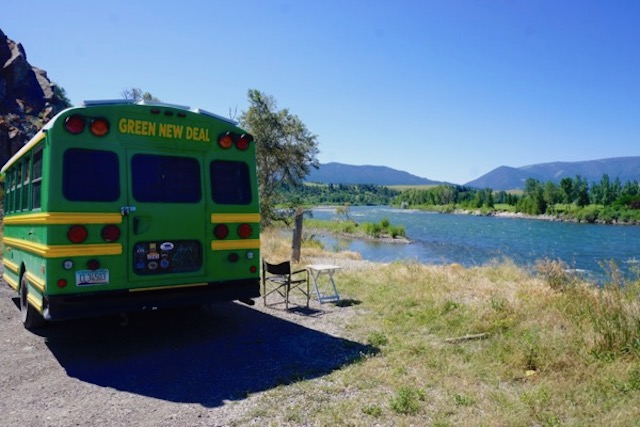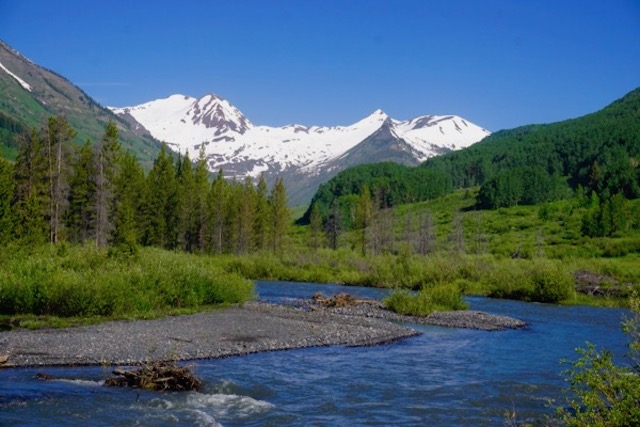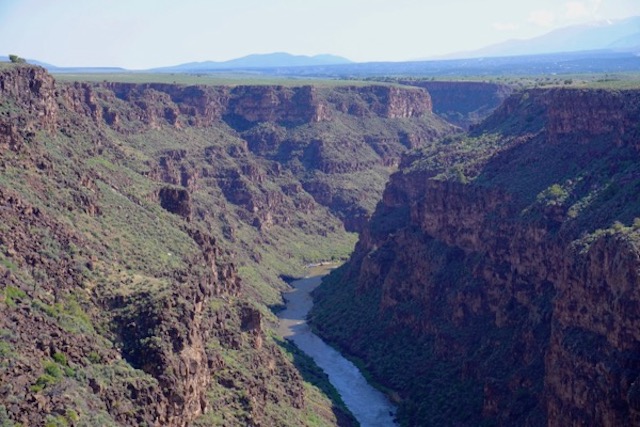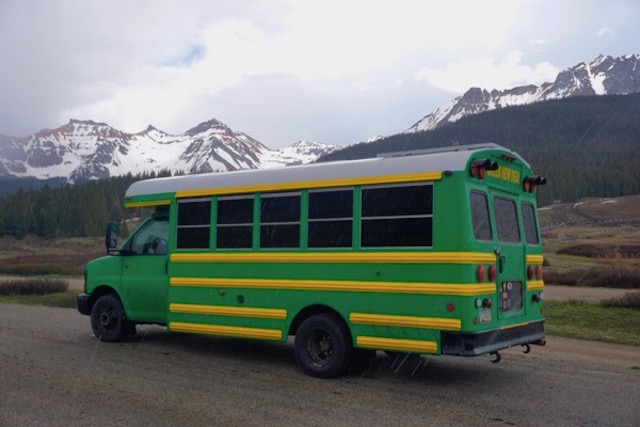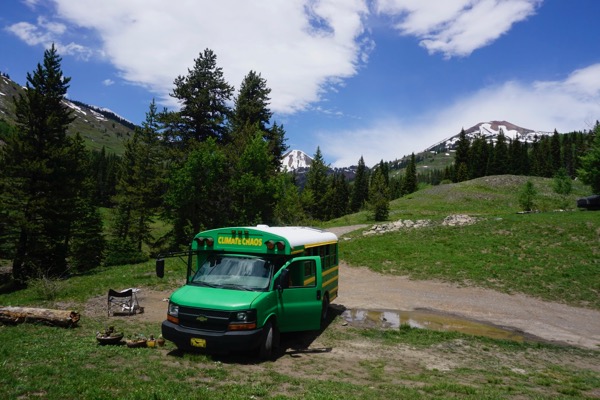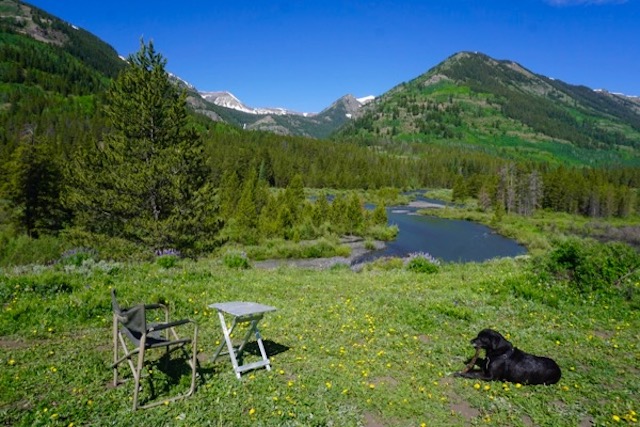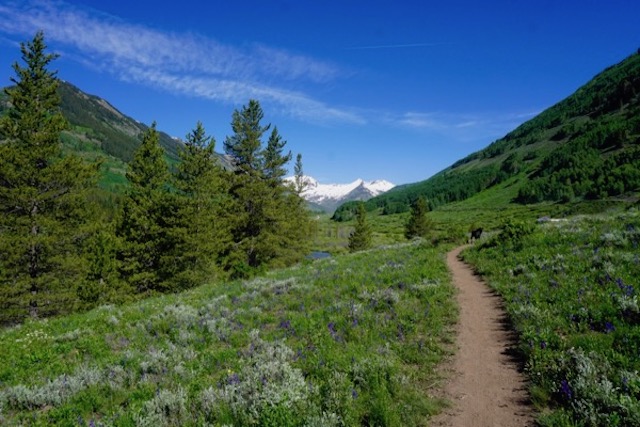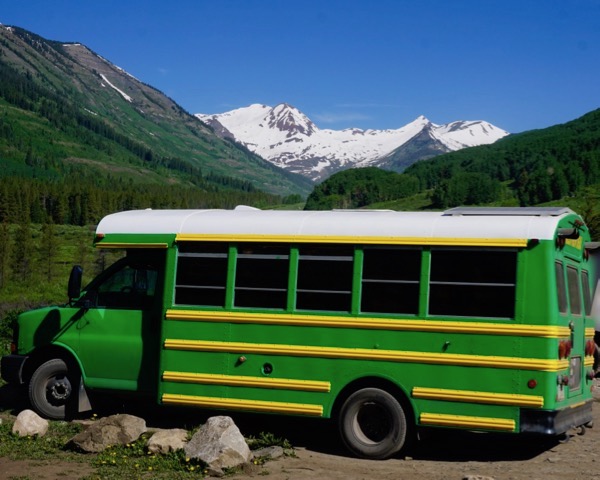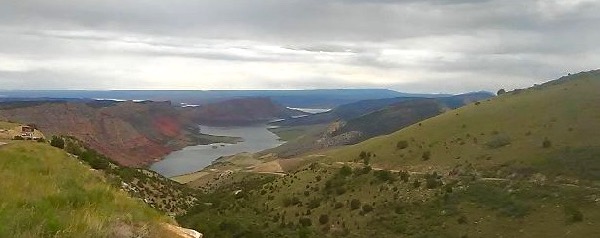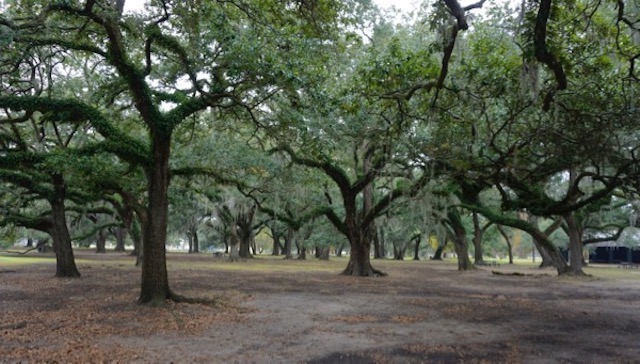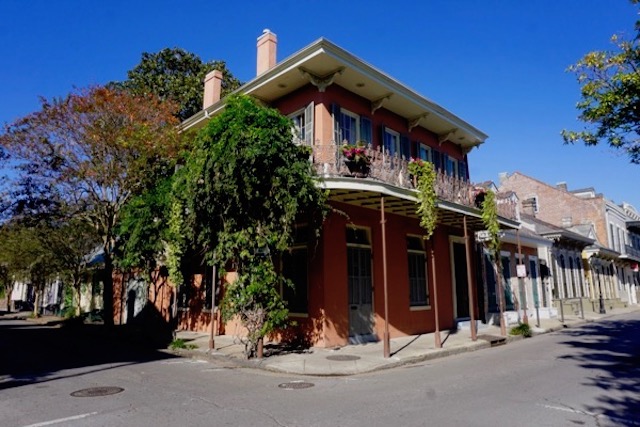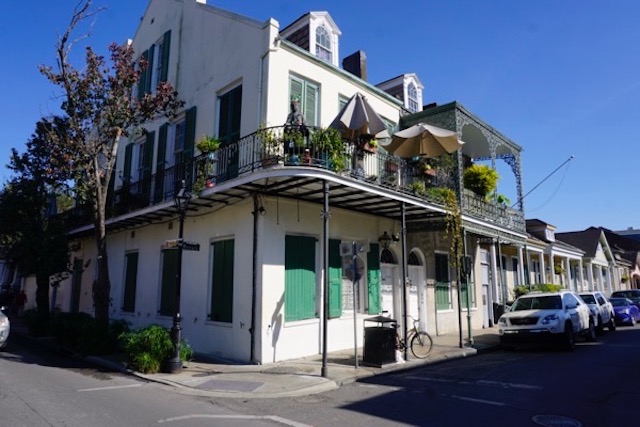Toxic Lakes And Institutional Racism
NJ State Parks and Open Space Programs Recall The Racist Practices of Robert Moses
[Updates below – McCabe Op-Ed response]
My good friend and former colleague Jeff Tittel has a brilliant Op-Ed running in today’s Bergen Record – read the whole thing:
Tittel connects the dots between toxic algae blooms that have closed major NJ recreational lakes, regulatory failures at the NJ DEP, and disinvestment in State parks.
I want to discuss briefly Tittel’s key conclusion:
Under Gov. Christie Whitman the focus of Green Acres went from parks and people to buying open space like farms and forests. As part of that change, she cut DEP’s parks staff from 1,000 to 400, where it still remains. I believe that was part of their plan because they didn’t want more people from urban areas coming out to recreate in wealthy suburban and rural areas. Those policies continue. …
Too many legislators with houses on Long Beach Island aren’t worried about swimming areas in North Jersey. Too many environmental groups cater to the country-club set, not parks and people.
Ouch!! (Is Senator Bob Smith, Chairman of the Environment Committee, the only legislator with a house on LBI? I don’t think so!).
[Update: In an email, Tittel adds:
Whitman also eliminated summer time bus service to our state parks from urban areas – Paterson to shepards pond – Perth Amboy to spruce run also eliminated the Warwick bus summer stop at Ringwood state park. ~~~ end update
I’ve written about how NJ’s “Green Acres” program is biased towards protecting the backyards of the wealthy elites, serving many of the same exclusionary and racist objectives as primitive private “restrictive covenants” and public municipal zoning struck down by NJ Courts, (and the US Supreme Court, , see Shelley v. Kraemer, 334 U.S. 1, 68 S.Ct. 836, 92 L.Ed. 1161 (1948); )see:
I’ve also written about how open space advocates, such as the Keep It Green Coalition (KIG), are funded by those same wealthy elites and Foundations, who are dues paying members and serve on the Boards of Directors and set policy that biases open space efforts, see:
KIG not only biases the open space program in favor of wealthy elites and against urban, poor and minority neighborhoods, but they stole public funds that were constitutionally dedicated to State parks and shifted them to acquisition of lands in the backyards of their elite Boards, members, and funders, see:
As Tittel notes, that has resulted in disinvestment in State parks – and lack of an urban parks program.
NJ’s open space and parks program priorities are a more sophisticated version of a very old form of anti-urbanism and institutional racism.
There are lots of ways elites keep out the riff-raff – institutional and structural, e.g. public investments, private covenants, disinvestment, “redlining”, zoning and land use restrictions, and even pure neglect that leads to toxic algae blooms.
NJ’s policies Tittel criticizes, i.e. those to prevent “more people from urban areas coming out to recreate in wealthy suburban and rural areas” – remind me of those practiced by Robert Moses.
Many people are aware of why Moses designed the bridge heights on the Long Island parkways: (How Low Did He Go?)
This summer, as New Yorkers head out to Long Island’s beach towns and parks on the Southern State Parkway, they’ll pass beneath a series of overpass bridges made infamous in Robert A. Caro’s monumental 1974 biography of Robert Moses, The Power Broker.
In one of the book’s most memorable passages, Caro reveals that Moses ordered his engineers to build the bridges low over the parkway to keep buses from the city away from Jones Beach—buses presumably filled with the poor blacks and Puerto Ricans Moses despised. The story was told to Caro by Sidney M. Shapiro, a close Moses associate and former chief engineer and general manager of the Long Island State Park Commission.
As Marta Gutman notes, Robert Caro also wrote about Moses and segregation in public swimming pools:
The man’s (Moses) passion for extending New Deal benefits to New Yorkers of color was less clear. Moses had no qualms about manipulating public policy to imprint his values, including antidemocratic ones, on liberal reform programs. In 1938 he eviscerated an amendment to the New York State Constitution that Martha Biondi has shown would have allowed the state government to battle racial discrimination in the private sector.13 Robert Caro underscores other ugly outcomes of Moses’s public work, ascribing them to the commissioner’s personal antipathy for people of color. This assessment leads to the serious charge that Moses not only tolerated race prejudice in the WPA swimming pools, but deliberately segregated them. Caro targets pools in Thomas Jefferson Park in East Harlem and Colonial (now Jackie Robinson) Park in Central Harlem, arguing the former was sited in a white and the latter in a black neighborhood, so each would be racially segregated. At Jefferson Park Pool, Caro asserts that decisions were taken about design and staffing to assure that only white people swam there.14
(see: Race, Place, and Play – Robert Moses and the WPA Swimming Pools in New York City – by Marta Gutman, The City College of New York)
Gutman tells a more nuanced and complex story than Caro:
Moses was a racial conservative, but the sweeping charges do not hold up under close scrutiny of the physical city and evidence uncovered since the publication of my research in Robert Moses and the Modern City: The Transfor- mation of New York. In this article, I argue that framing the discussion of race in terms of individual prejudice has dis- tracted attention from the more powerful political, spatial, and structural dynamics of racism, forces of which Moses was fully aware, and the actions some New Yorkers took to counteract them. As Biondi has argued, emphasizing per- sonal prejudice obscures the relationship of the man to the trajectory of reform liberalism in American politics. Biondi insists liberalism was rendered tragic by compromise with racial segregation—tainted by its appearance during the Jim Crow era and the ensuing unholy alliance forged during the New Deal between southern segregationists and northern politicians. The result, public policy deeply ingrained with the effects of race prejudice, proved devastating for blacks and cities.15 However, the outcome was not set in stone in New York during the 1930s. After a race riot exploded in Harlem in 1935, Moses constructed a stellar modern facility for public recreation in Central Harlem that challenged the unequal treatment of black and white Americans, widespread during the New Deal.16
Tittel’s arguments – in light of the New Deal era history Robert Caro and Gutman write about – are particularly relevant as the discussion of the Green New Deal emerges in the current context of Black Lives Matter and a focus on institutional racism.
[Update: 7/27/19 – DEP gets hammered in a Tittel Bergen Record Op-Ed for neglect and elitism. How do they respond?
The next day, they lift the advisory on a tiny portion of lake Hopatcong that is accessible to the public only by boat!
Indian Harbor, which is only accessible by boat, is near beaches that will not be accessible due to continued high bacteria levels, including 24,750 at Pebble Beach, 24,500 at Sand Harbor and 26,750 as Bass Rock Beach.
Talk about tone deaf political malpractice! How do you double down on the kind of charges Tittel made? Just what does it take to get fired?
And Commissioner McCabe is not only tone deaf. She is a coward – her statement runs away from the DEP advisory, dodging “blame” for effectively closing the lake to recreation:
An advisory is not a ban or an order for lake closure. An advisory is a form of guidance. No one would be ticketed or removed from the water if they choose to swim or engage in watersports when an advisory is issued. An advisory is meant to provide the public with information to help people make choices for themselves.
Not only is this statement cowardly, but it sends the wrong message to the public, virtually inviting people into the water.
Finally, it abdicates DEP’s responsibility to protect public health by relying on an ideological stance: i.e. “people make choices for themselves”.
Some risks are too great to allow individual choice to govern decision-making. In such cases, Government must step up and assume responsibility.
McCabe is a coward – she fears Mulshine’s attack on “Nanny State” grounds.
Finally, DEP’s statement misleads the public about DEP’s overall lake management program – science and regulatory oversight. DEP brags about how wonderful they are::
From Lake to Lab: New Jersey’s Advanced Process for Monitoring Harmful Algal Blooms
New Jersey has one of the most advanced monitoring processes and protective standards to reduce the risk to public health. DEP’s aggressive monitoring program on Lake Hopatcong includes daily monitoring and detailed scientific analysis of several water quality parameters related to harmful algal blooms.
But that statement documents ONLY DEP’s EMERGENCY REACTION to the HAB.
It says NOTHING about prevention, routine water quality monitoring and assessment, program staffing and funding, and the adequacy of DEP’s regulatory actions (i.e. Lake TMDL for nutrients).
It says NOTHING about solutions, e.g. mandatory septic pumpouts, investments in infrastructure upgrades, stricter regulations, etc
DEP has failed miserably on those matters. ~~~ end update]
[Update #2 – 7/29/19 – DEP Commissioner McCabe wrote an Op-Ed in today’s NJ.com.
It’s almost as if she read my prior posts and update above and confirmed my criticism.
First of all, McCabe blamed “mother nature” (which is a blatant form of denial of climate change and DEP regulatory responsibilities)
DEP will lift the advisories, as soon as the testing indicates that bacteria cell counts are trending reliably below the health advisory level. Unfortunately, control of those conditions at this point is in the hands of Mother Nature, who has not been kind lately as we have experienced heavy rains and elevated heat levels.
Second, it finally outlining solutions to the problem, she ignores DEP’s regulatory responsibilities and enforcement powers, instead pointing the finger at local governments and individuals:
In the long-term, we know the steps we must take to prevent future algal blooms. Algal blooms are fed by nutrients, most notably phosphorus, from septic tanks, surface runoff, and stormwater that flows into the lakes, either directly or through the lakes’ many feeder streams. Nutrients in lawn fertilizers and animal droppings readily flow into the lake when it rains.
The solutions are not necessarily difficult or expensive. Much can be accomplished through simple methods – residents in the watershed should routinely clean out septic systems, communities should sweep streets and clean stormwater catch basins ahead of the summer season. Property owners can reduce or forego fertilizer application, and install green infrastructure.
Has McCabe even read the DEP’s TMDL for Lake Hopatcong? Does she know it says THIS:
“eutrophic lakes & aquatic life impairments are ranked as Low Priority in the 2002 Integrated List of Waterbodies because they are not directly related to human health issues” @ p.9
Is she aware of DEP’s voluntary provisions of the Water Quality Management Planning rules (NJAC 7:15-1 et seq) – that apply to septics, septic districts and pump-outs?
Does McCabe know of DEP powers to reduce nutrients under numerous regulations, including stormwater, stream encroachment, freshwater wetlands, water quality standards, septic design, and Highlands Act?
Does McCsbe know that the DEP’s Wetlands Strategy is weak? (wetlands cycle and store nutrients)
Is she aware of significant gaps and loopholes in DEP regulations, such as forestry management BMP’s?
Has McCabe read DEP’s Nutrient Management Strategy?
How could McCabe IGNORE ALL THAT? Awful Op-Ed.

